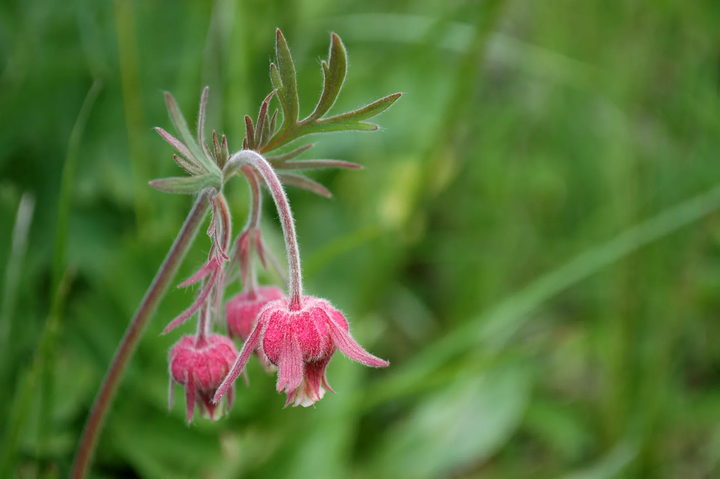Prairie Smoke (Geum triflorum), a clumping perennial wildflower, might not be a show-stopping plant, but it'll add plenty of interest to informal gardens from early spring right through to fall.
Native to the North American prairies, it gets its name from the decorative, long, wispy, feather-like achenes (seed heads) that develop during the summer. With their pinkish-shades, they create an impression of puffs of smoke. They're sometimes, less attractively, also referred to as 'old man's whiskers'. These 'whiskers' remain on show for several weeks before animals or the wind disperse them.
The small, pink, bud-like flowers, may not be as impressive as the achenes, but they still add an early splash of color to your garden. Prairie smoke is known to be one of the earliest flowers to bloom in their natural habitat. During the fall, the semievergreen foliage takes on purplish, reddish and orange hues and then turns to a burgundy shade come winter. This versatile, low-maintenance plant sits well in a variety of different garden types. The wispy seed heads make it a good choice as an accent plant or along borders.
Its rhizomatous root system allows it to spread quickly and abundantly, and they work well as a mass wild garden or meadow groundcover. Since it can cope with gravelly, dry conditions, it also adds interest in rock gardens. Because it isn't the largest of plants, care should be taken to position it where it won't get overshadowed. It isn't tolerant of competition from more vigorous, leggy species.
The wispy achenes look great dried and added to flower arrangement too. Simply select a whole, healthy stem and hang it upside down in a dry and warm environment. These plants shouldn't be confused with the Pulsatilla nuttalliana. This member of the buttercup family is more commonly known as the American pasqueflower or the prairie pasqueflower, but it sometimes also gets referred to as prairie smoke.
Botanical Name:
Geum triflorum
Common Name:
Prairie Smoke, Old Man's Whisker
Plant Type:
Perennial herbaceous plant
Mature Size:
Up to 18 inches tall
Sun Exposure:
Full sun/light shade
Soil Type:
Rocky, sandy, gravelly, loamy
Soil pH:
Neutral and alkaline, well-drained
Bloom Time:
Mid spring to early summer
Flower Color:
Reddish pink to purple
Hardiness Zones:
3 to 7
Native Area:
North America

How to Grow Prairie Smoke
Prairie smoke is a low-maintenance and easy-to-grow plant providing it gets a sunny position. It can grow in dry regions with infertile, rocky soil. Once it's established, it doesn't need much in the way of watering and is relatively drought-tolerant during the summer.
Light
Your prairie smoke will appreciate a full sun position. They can tolerate partial shade, but too much will drastically reduce their flowering.
Soil
Prairie smoke isn't overly fussy about soil type. In their native habitat, they're commonly found in shallow, dry to mesic, sandy, gravelly sites. They can still grow well, however, in loamy and clay soils. The soil just needs to be well-drained, and they can benefit from it being enriched with organic matter. In leaner soils, the plant usually still grows well but will likely not grow as large.
Water
Young plants need considerably more moisture than well-established specimens. They should get plenty of water during hot summers and need moist conditions in the spring.
Mature prairie smoke still likes moist conditions while they experience their new spring growth, but they prefer drier conditions from the summer onwards. Even when summers are particularly hot and dry, established plants are relatively drought-tolerant. It's important to make sure they don't have wet feet in winter—they really don't appreciate this.
Temperature and Humidity
This species tends to thrive in cooler, mild climates. They can still survive in hot, dry locations, but you might find that the leaves don't look as healthy during the summer months. They do, however, tend to perk up as the summer heat becomes less intense. They aren't a fan of too much humidity either.
Propagating Prairie Smoke
Because they're a clumping species, propagation by division works well with prairie smoke in early spring or fall. Some gardeners divide them every few years, even if they don't need new plants. This can help them to remain healthy in a controlled garden setting.
Growing From Seeds
If you plan to grow prairie smoke from seeds, they'll need a one to two month period of cold stratification initially. They can be rather challenging to get established, so they're best started indoors in early spring, where they won't face any issues with competition from other species.